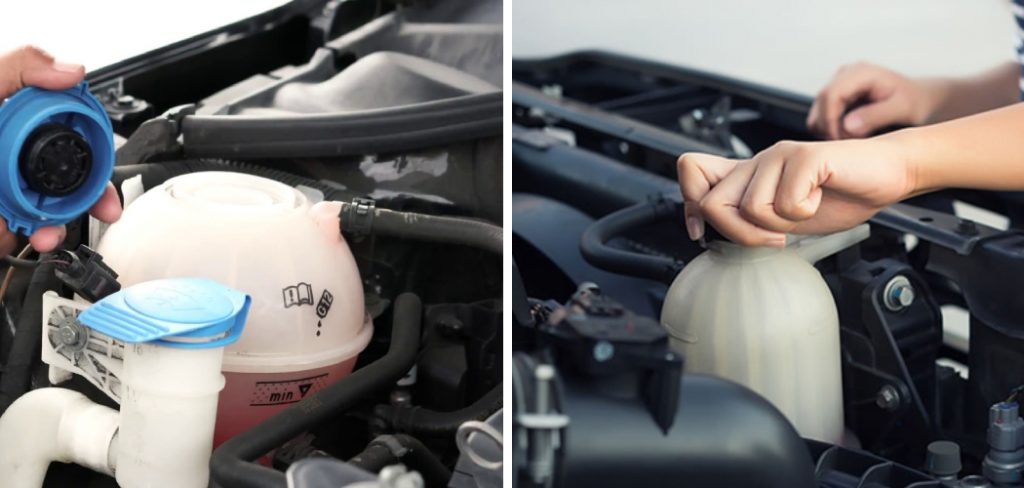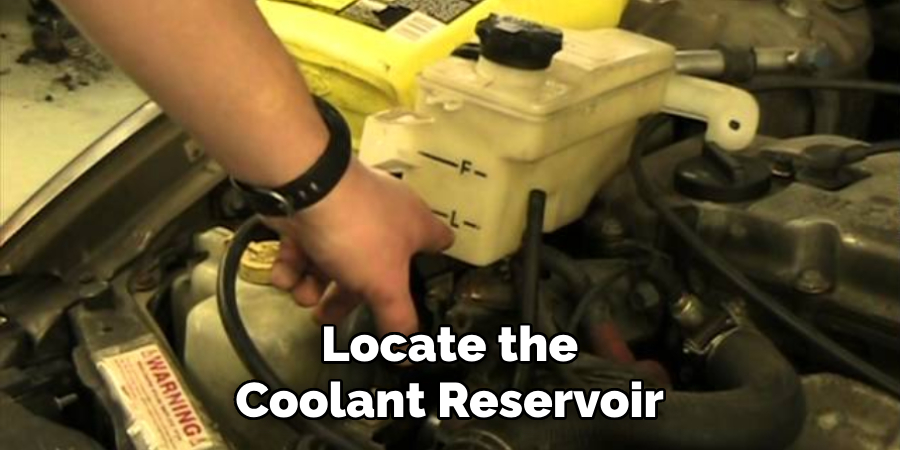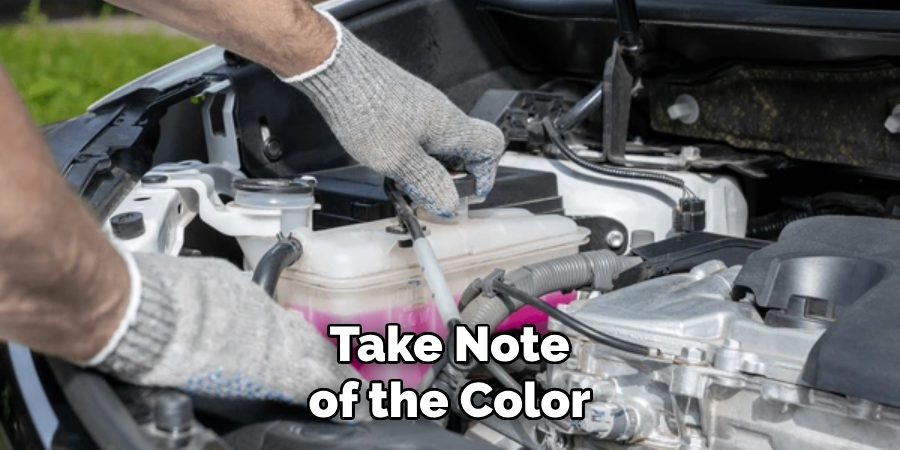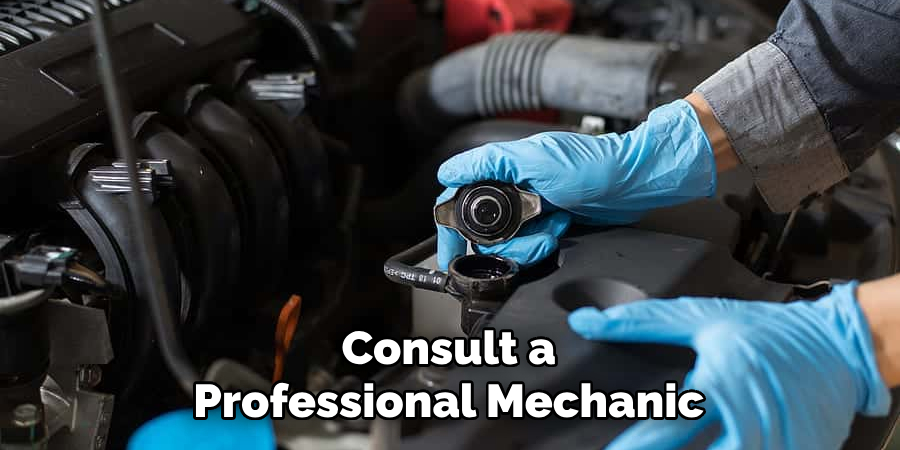Maintaining your vehicle’s coolant level is an integral part of preventative maintenance that can help prevent costly repairs. As the coolant circulates through your Jeep Grand Cherokee’s engine, it plays a crucial role in keeping temperatures consistent and avoiding overheating issues. However, many owners need to remember to inspect their coolant levels routinely.

In this blog post, I’ll walk you through the simple steps on how to check coolant level jeep grand Cherokee and ensure your engine is adequately protected. We’ll discuss where to find the reservoir, the minimum and maximum levels, and what to do if it needs to be topped off.
Learning how to check this vital fluid regularly can help you catch any potential issues early and avoid breakdowns, so let’s get started.
What Will You Need?
Before you get started, make sure to gather the necessary tools and materials. For this task, you will need:
- A rag or paper towel
- A flashlight (in case the reservoir is hard to see)
- Coolant: Make sure it is specifically formulated for your Jeep Grand Cherokee.
Once you have all the items, you are ready to begin.
10 Easy Steps on How to Check Coolant Level Jeep Grand Cherokee
1. Locate the Coolant Reservoir
The first step in checking your Jeep Grand Cherokee’s coolant level is to locate the coolant reservoir. This can usually be found near the front of the engine compartment, on either side of the vehicle. It will have a cap labeled “coolant” or “engine coolant.”

2. Check the Level
Once you have located the coolant reservoir, remove the cap and check the coolant level inside. The coolant should be between the minimum and maximum marks on the pool. If it is below the minimum mark, you will need to add more coolant.
3. Add More Coolant if Needed
Add more coolant if your Jeep Grand Cherokee’s coolant level is below the minimum mark. Use a 50/50 mix of antifreeze and water for optimal performance. Slowly pour in small amounts of coolant at a time, checking the level frequently until it reaches between the minimum and maximum marks on the reservoir. Be careful not to overfill, as this can cause issues with your vehicle’s cooling system.
4. Inspect for Leaks
After adding more coolant, it is important to inspect for any leaks in your vehicle’s cooling system. Look for any signs of dripping or pooling under your car or around hoses and connections. If you notice any leaks, it is best to have them repaired by a professional mechanic.
5. Repeat Regularly
It is recommended to check your Jeep Grand Cherokee’s coolant level every month or before long trips to ensure that it is optimal for maintaining proper engine temperature and performance. Regularly checking and maintaining your vehicle’s coolant level can help prevent overheating and potential damage to your engine. If you notice a significant decrease in coolant levels or frequent leaks, it may be a sign of a more serious issue that a professional should address.
6. Check the Color

While checking your coolant level, also take note of the color. Coolant should typically be bright green, yellow, pink, or blue, depending on the type and brand used. If you notice that your coolant is rusty or a color that’s not one of the previously mentioned, it may be a sign of contamination or the coolant being old. Contaminated or old coolant can reduce cooling efficiency and potential engine damage. In this case, a coolant change is highly recommended. Always remember to use the coolant type specified in your Jeep Grand Cherokee’s owner’s manual, and never mix different types of coolant.
7. Reattach the Cap
After you’ve ensured that the coolant level is adequate and the color is as expected, securely reattach the coolant reservoir cap. It’s crucial to ensure the cap is put back on firmly to prevent any coolant from escaping and to maintain the system pressure. Be mindful not to overtighten it, as this could lead to damage. Once the cap is secure, wipe off spilled coolant around the reservoir using a rag or paper towel.
8. Clean Up and Dispose of Old Coolant
If any old coolant was removed during this process, clean it up properly. Old coolant should be disposed of in a responsible and environmentally friendly manner. Don’t simply pour it down the drain or onto the ground, as it harms the environment and animals. Take it to a local waste disposal facility or auto parts store, where it can be disposed of correctly. After cleanup, make sure to wash your hands thoroughly.
9. Regular Maintenance
Regular servicing of your Jeep Grand Cherokee, including coolant changes, is crucial to the longevity and performance of your vehicle. At every service, ask your mechanic to check the state of the coolant and replace it entirely if it’s been more than two years or 30,000 miles since the last change. Regularly replacing the coolant ensures that it can protect your engine effectively against overheating and corrosion, contributing to a smoother and more reliable driving experience.

10. Keep Records
Keeping a record of when you inspect, top off, or change your coolant can help you maintain a regular schedule and ensure the well-being of your Jeep Grand Cherokee’s engine. Note down the date, the current mileage, and any observations (like changes in color or level of the coolant). This can also be beneficial for any future owners of the vehicle or for your mechanic to understand the maintenance history. Remember, regular checks and timely maintenance are key to your car’s longevity and optimal performance.
By following these ten easy steps, you can check your Jeep Grand Cherokee’s coolant level confidently and ensure that it is ready for your next adventure.
5 Additional Tips and Tricks
1. Practice Safety
Always ensure that your vehicle’s engine is cool before checking the coolant level. If the engine is hot, pressure within the cooling system could cause the coolant to spray out when the cap is removed, leading to potential burns.
2. Use the Correct Coolant
Different vehicles require different types of coolant. Always use the type recommended explicitly in your Jeep Grand Cherokee’s owner’s manual to ensure maximum efficiency and lifespan of your vehicle’s engine.
3. Wear Protective Gear
When working with coolant, it’s a good idea to wear gloves and protective eyewear to prevent any potential contact with the skin or eyes. Coolant can be hazardous if ingested, inhaled, or when it comes into contact with the skin.
4. Check for Other Signs of Issues
While inspecting your coolant level, watch for other signs that could indicate potential issues with your vehicle’s cooling system. This includes unusual noises, overheating, and unusual smells. If you notice any of these signs, it’s best to have your vehicle inspected by a mechanic.
5. Consult a Professional
If you’re unsure about how to check your Jeep Grand Cherokee’s coolant level or if you suspect there may be an issue with your vehicle’s cooling system, it’s always best to consult a professional mechanic for assistance. They have the expertise and equipment to diagnose and address any problems properly. Don’t hesitate to seek help when needed.

With these additional tips, you can confidently keep your Jeep Grand Cherokee’s cooling system in top condition and enjoy a smooth and worry-free driving experience.
5 Things You Should Avoid
1. Avoid Overfilling the Coolant Reservoir
Only fill the coolant reservoir at the ‘Max’ line. Overfilling could lead to excessive pressure in the cooling system and may result in leaks or other damage.
2. Avoid Mixing Different Types of Coolant
Different coolants have different chemical compositions, which may not be compatible. Mixing them can lead to decreased cooling efficiency and potential engine damage.
3. Avoid Ignoring Coolant Level or Color Changes
Significant changes in coolant level or coolant color can signal potential issues in the cooling system. Neglecting these signs can lead to severe engine damage.
4. Avoid Handling Coolant Without Protection
Coolant is a hazardous substance. Always use protective gear, such as gloves and goggles, when working with it. Never ingest or inhale coolant; keep it away from children and pets.
5. Avoid Disposing of Coolant Improperly
Coolant is harmful to the environment and wildlife. Always dispose of old coolant responsibly at a local waste disposal facility or auto parts store, not down the household drain or on the ground.
By avoiding these actions, you can ensure the proper care and maintenance of your Jeep Grand Cherokee’s cooling system for years. Now, go forth and confidently check your coolant level like a pro!
Conclusion
In conclusion, it is crucial to regularly monitor the coolant levels in your Jeep Grand Cherokee, especially before embarking on long journeys or during extreme weather conditions. By following the simple steps outlined in this blog post on how to check coolant level jeep grand Cherokee, you can quickly check and maintain the right amount of coolant in your vehicle.
Always use a quality coolant and follow the recommended mixing ratio to ensure maximum efficiency. This vital task is necessary to avoid severe engine damage and costly repairs. Take control of your car’s health today, and check your coolant level before it’s too late. Your Jeep will thank you!
Also, remember other routine maintenance tasks, such as oil changes and tire rotations, to keep your vehicle running smoothly. Show your Jeep some love, rewarding you with years of reliable service.

About
JeepFixes Team is a skilled author for Jeep Fixes, bringing 6 years of expertise in crafting a wide range of jeep fixes. With a strong background in jeep fixes work, JeepFixes Team’s knowledge spans various types of fixtures, from decorative pieces to functional hardware, blending precision with creativity. His passion for jeep fixes and design has made him a trusted resource in the industry.
Professional Focus:
Expert in Jeep Fixes : JeepFixes Team aesthetic specializes in creating durable and innovative jeep fixes, offering both appeal and functionality. His work reflects a deep understanding of jeep fixes techniques and materials.
Sustainability Advocate : He is dedicated to using sustainable practices, ensuring that every fixture is crafted with eco-friendly methods while maintaining high-quality standards.
In his writing for jeep fixes, JeepFixes Team provides valuable insights into the latest trends, techniques, and practical advice for those passionate about jeep fixes, whether they are professionals or DIY enthusiasts. His focus on combining artistry with engineering helps others discover the true potential of jeep in design.
